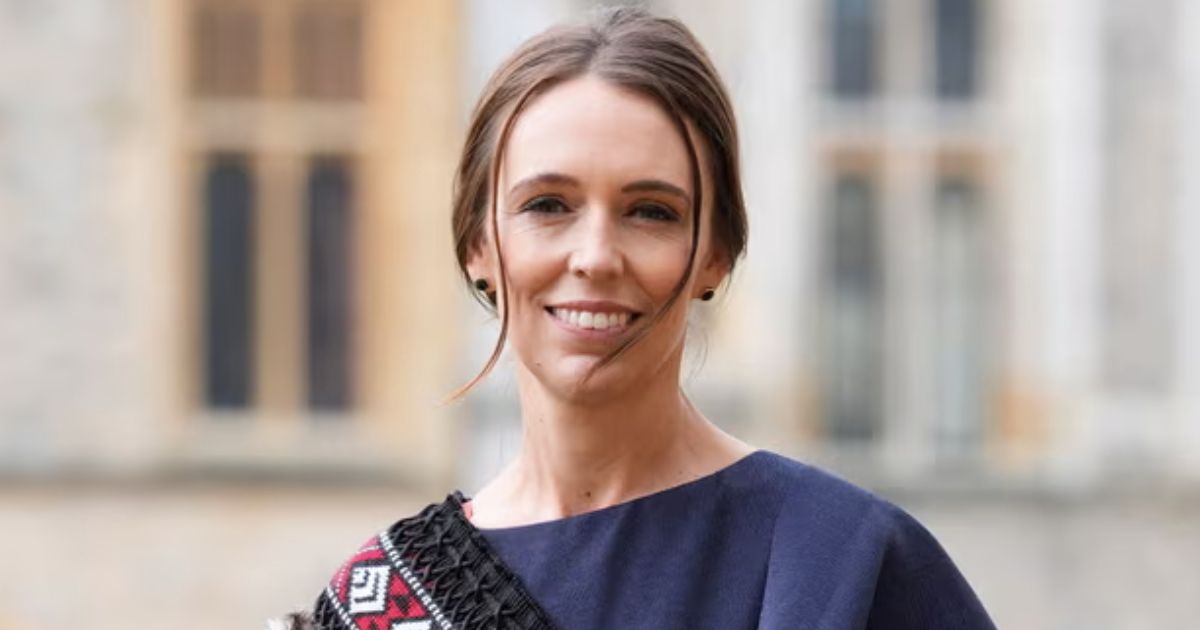Let’s be real—politics can feel like a dusty, old boys’ club, right? The suits, the shouting matches, the endless power plays. But then comes Jacinda Ardern, a breath of fresh air from New Zealand, who didn’t just crash the party—she rewrote the guest list. Her journey from a small-town girl to one of the world’s most admired leaders is the kind of story that makes you sit up and think, “Wait, this is what politics could be?” Whether you’re into leadership, women’s empowerment, or just a darn good underdog tale, Jacinda’s true story has it all. So, let’s unpack her rise, her real-life struggles, and why she’s a name you won’t forget.
Small Beginnings, Big Dreams of Jacinda Ardern

Jacinda Kate Laurell Ardern was born on July 26, 1980, in Hamilton, New Zealand—a place more known for sheep than political superstars. Growing up in Morrinsville, a tiny rural town, she wasn’t exactly surrounded by power brokers or fancy debates. Her dad was a police officer, her mom worked in a school cafeteria, and Jacinda? She was just a kid who cared—really cared—about making things better. She once said she was raised with a “strong sense of fairness,” and that’s the thread that runs through her whole story.
Here’s the kicker: Jacinda didn’t dream of being a politician. Nope. She wanted to fix stuff—poverty, inequality, the kind of things that keep you up at night. At 17, she joined the Labour Party, not because she craved the spotlight, but because she saw it as a way to actually do something. She wasn’t born with a silver spoon or a political dynasty behind her—just a fire in her belly and a knack for connecting with people.
The Rough Road to Parliament
Fast forward a bit—Jacinda’s in her 20s, working odd jobs like DJing (yep, she spun records!) and slinging fish and chips, all while studying communications at the University of Waikato. After graduating, she didn’t waste time. She dove into politics, landing gigs with Labour leaders in New Zealand and even jetting off to London to work for Tony Blair’s team. Talk about a glow-up!
But here’s where it gets real: her early political career wasn’t all smooth sailing. In 2008, at just 28, she became a Member of Parliament (MP) in New Zealand—the youngest sitting MP at the time. Cool, right? Except not everyone thought so. She faced the usual nonsense women in politics deal with—comments about her looks, her age, her “lack of experience.” Critics called her “too soft” for the cutthroat world of governance. Spoiler alert: they were wrong.
The Leap to Leadership: A Whirlwind Rise of Jacinda Ardern

Okay, let’s zoom to 2017, because this is where Jacinda’s story goes from inspiring to straight-up wild. She’s 37, still relatively new to the leadership game, when the Labour Party’s leader quits seven weeks before a general election. Panic mode, right? Nope—Jacinda steps up. She takes the reins, and what happens next is pure magic.
In just weeks, she turns a floundering campaign into a movement. People dubbed it “Jacindamania.” She’s out there, talking about climate change, child poverty, and kindness—yes, kindness—in a way that feels genuine, not preachy. New Zealanders ate it up. On October 19, 2017, she becomes Prime Minister, the youngest in over 150 years and only the third woman to hold the job. Mind. Blown.
Leading Through Crisis: The Real Jacinda Shines
Being PM is tough enough, but Jacinda didn’t get a honeymoon phase. In March 2019, a terrorist attacked two mosques in Christchurch, killing 51 people. It was New Zealand’s darkest day, and all eyes were on her. What does she do? She doesn’t just issue a statement—she shows up. She hugs survivors, wears a headscarf in solidarity, and pushes through gun control laws in 10 days. The world watched in awe. This wasn’t politics as usual; this was leadership with soul.
Then came 2020—hello, COVID-19. While other leaders stumbled, Jacinda went hard and early with lockdowns and border closures. Result? New Zealand crushed the curve, earning her global praise. She didn’t strut around like a superhero, though—she was honest about the tough calls, Zooming with citizens from her couch, baby toys in the background. Oh, did I mention she had a kid while in office? Yeah, more on that in a sec.
Motherhood Meets Power: Breaking Every Mold

Here’s a moment that still gives me chills: In June 2018, Jacinda gives birth to her daughter, Neve, becoming the second world leader ever to have a baby while in office (shoutout to Pakistan’s Benazir Bhutto). She takes six weeks of maternity leave—not much, but groundbreaking for a PM—and returns with her partner, Clarke Gayford, as the stay-at-home dad. She even brings Neve to the UN General Assembly, nursing her between speeches. Normalize that, world!
This wasn’t just cute optics—it was a middle finger to the idea that women can’t juggle leadership and life. She got flak, of course—some said she couldn’t focus, others called it a publicity stunt. But Jacinda? She just kept going, proving you don’t have to choose between being a mom and being a boss.
The Honest Struggle: Why Jacinda Ardern Walked Away
Now, let’s get raw. By 2023, after six years as PM, Jacinda was done. Not fired, not forced out—she chose to leave. In a tearful speech, she said, “I no longer have enough in the tank.” She’d led through a pandemic, a terror attack, volcanic eruptions, and relentless scrutiny. She’d faced death threats, misogyny, and the pressure of being a global icon—all while raising a toddler. Who wouldn’t be exhausted?
Her exit wasn’t a failure—it was honesty. She admitted what so many women feel but rarely say: you can’t do it all forever. She stepped down on January 19, 2023, leaving a legacy of compassion, competence, and a 2020 election landslide that gave Labour its biggest win in decades. Not too shabby, huh?
What Jacinda Teaches Us About Women in Politics
So, why does Jacinda Ardern’s journey hit so hard? It’s not just the wins—it’s the realness. She didn’t fake it ‘til she made it; she felt it, fought it, and owned it. Her story screams that women in politics don’t need to mimic men to succeed—they can lead as themselves, flaws and all. From Morrinsville to the world stage, she showed that empathy isn’t weakness, that vulnerability isn’t a liability, and that a woman’s voice can change everything.
The Takeaway: Keep Watching Women Like Her
Jacinda’s out of office now, working on projects like conservation and writing a book, but her impact? That’s forever. For anyone searching “women in politics” or “inspiring female leaders,” her name’s a goldmine. She’s proof that leadership isn’t about power grabs—it’s about people. And for us regular folks? It’s a nudge to chase what matters, even when the path’s messy.
So, next time you’re scrolling, thinking about women breaking barriers, give Jacinda Ardern a Google. Her honest, true story—from small-town dreamer to global game-changer—is one you’ll want to tell your friends about. What’s your favorite part? Hit me up in the comments—I’d love to chat!
Image Source: Andrew Matthews/AFP/Getty Images




3 thoughts on “Jacinda Ardern: The Kiwi Trailblazer Who Redefined Women in Politics”